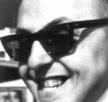Re: ‘Reflections on white righteousness’ by R. W. Johnson (Politicsweb 2.10.2015).
R. W. Johnson’s lethally accurate comments on post-apartheid South Africa, and the ageing revolutionaries dreaming on in their 1960s time capsule, are beyond criticism; not so, alas, his review of C.J. Driver's ‘The Man with the Suitcase. The Life, Execution and rehabilitation of John Harris, Liberal Terrorist’ (Politicsweb 2 October). He not only fails to point out major shortcomings in the book, but adds a factual error and ill-judged comment of his own.
As John Harris’ station bomb of July 1964 did in a small way change South African history – mainly by dealing a death blow to the Liberal Party of South Africa (as correctly noted in Professor Johnson’s review), it is important that the record be kept straight.
May I, as someone who at the time was an an executive member of the LPSA, and a friend of John Harris who attended every day of his trial and regularly visited him in prison until the day before his execution, offer the following comments on both the book and the review?
C. J. Driver’s book.
Mr Driver’s book is skilfully written, gripping, and makes poignant reading, but it has three major defects which a diligent reviewer should have picked up:
(1) It repeatedly treats various inadequately sourced theories to do with the bomb, and much better-sourced ones (eg sworn courtroom evidence that was unchallenged by John Harris or his defence counsel), as being of equal weight.
(2) It repeatedly treats people killed by apartheid, and John Harris (who was executed only after being found guilty of premeditated murder) as equally worthy of the status of ‘political victim’.
(3) It states in its title that John Harris has been ‘rehabilitated’. This is not a conclusion reached in the body of the book, which after fairly stating the arguments both for and against such a judgement, reaches no final conclusion, ending appropriately with the enigmatic words ‘and yet ….’ In this case, what it says on the tin is definitely not what you get when you open it!
Examples of (1) will be found on the following pages (numbered as in the electronic version of the book):
Pages 9 and 35. Discussing the timing of John Harris’ telephoned warning to the police, Mr Driver first puts it at ‘about quarter past four’ (page 9, unsourced); and then at ‘between 4.25 and 4.27 pm’ (page 35, sourced). According to sworn courtroom testimony the time was 4.25 pm - that’s 8 minutes before the bomb exploded.
Page 32. Discussing the position of the bomb in the station, Mr Driver mentions several possibilities, not telling his readers that the sworn courtroom evidence given by several witnesses (including relatives of the dead and injured victims) placed the position unequivocally in the waiting cubicle to platforms 5 and 6; and that John Harris’ defence counsel raised no objection to this testimony, either then or later.
Examples of (2) will be found on the following pages:
Page 70. Mr Driver writes of a memorial event in Pretoria in December 2011 for ‘those hanged for political crimes’, and people who were ‘killed for their opposition to apartheid’, including John Harris. But Harris was sentenced to death only, and very specifically, for the offence of murder, the judge saying that in the circumstances he would refrain from passing sentence on the two charges of sabotage.
In the same vein, Mr Driver writes (page 71) that ‘John Harris was the only white man executed for a political crime’; and (page 75) of people (by implication including John Harris ‘who died fighting apartheid’.
R. W. Johnson’s review.
Professor Johnson’s review contains both an error of fact, which could have been easily avoided by checking the record; and an ill-considered comment.
As regards the first point, he writes (paragraph 11) that the leading liberal South African advocate Ernie Wentzel represented John Harris in court ‘because no other lawyer would’. Mr Wentzel never represented John Harris. He was defended throughout the trial by Mr Namie Philips QC (senior counsel) and Mr David Soggot (junior counsel, and - when the case went to appeal - by Mr H Hanson QC.
As regards the second point, R. W. Johnson writes (paragraph 2) that the reason the station wasn’t cleared, and the carnage avoided, may have been ‘because it suited the apartheid police to let the bomb explode’.
But as the bomb exploded 8 minutes after John Harris’ telephoned warning to the police, this could never have been an option.
A good but flawed book, and a slapdash review
The cause of history has been ill-served by C. J. Driver’s skilfully written, poignant, but misleadingly titled book, and by R. W. Johnson’s inadequately researched and – in unfortunate contrast to his excellent analysis of ‘white righteousness’ - slapdash review.
We await a thoroughly researched work on this matter, by an author free of personal interests.
Meanwhile, the basic facts surrounding the station bomb and its aftermath can be found in the following Politicsweb articles:
‘John Harris and the Joburg station bomb: the real timeline’ by Paul Trewhela and Maritz van den Berg, 03 May 2013.
‘Don’t forget the victims of John Harris’ by Maritz van den Berg, 13 September 2015.
Maritz van den Berg
London
4 October 2015

